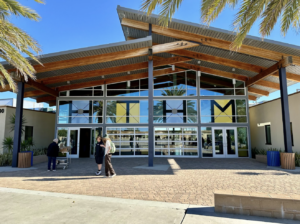The college access formula
A local Rotary group adopted a high need school and asked me “What’s the formula for getting kids into college?”
There are three complementary strategies that grant makers and reformers utilize in an attempt to improve college attendance and completion:
1. Academic preparation: students need to earn credits necessary to graduate, be able to pass a placement exam and begin earning credit without remediation, and, if they want to go to a selective school, score well on SAT/ACT exam. Promising strategies include:
· Rigorous course taking and improved instruction
· Academic intervention in schools: Read 180, Ramp Up
· Academic intervention outside school: Sylvan, Kaplan
· Academic summer school
2. Social capital: students need persistence and motivation to work hard, the social skills to interact in a variety of settings, the self-discipline to manage time and projects, and access to youth and family services to meet basic needs. Promising strategies include:
· Safety net: Communities in Schools
· Internships and applied learning: Big Picture and NAF
· Mentors: Big Brothers
3. Affordability: college costs continue to escalate making it more difficult for
· Low income and minority scholarships: United Negro College Fund and Gates Millennium Scholars
· Early promise of scholarships: I Have a Dream Foundation
This list is in order of importance. Groups like UNCF were formed when financial barriers were the number one access issue. It’s now academic preparation. About two thirds of American students that start high school don’t leave prepared for college and careers.
Several approaches touch two of these categories. A good advisory should monitor preparation and build social capital. Early college high schools improve preparation and affordability.
So what’s a local Rotary group to do? If there’s an opportunity to improve preparation, it’s likely to be the highest impact. But it can be hard to get at for an outside group. Summer school and credit recovery can help but they’re not very systemic or sustainable.
Second would be strategies that build social capital. They can be personally rewarding for those directly involved but results are hard to measure which can reduce donor motivation.
Third is the ever popular scholarship program—easy to make, easy to measure, but probably not the highest impact approach.
I’ve attempted grand experiments that combine all three; when efforts to improve instruction failed, it was good to have a back up plan. So the answer depends on the entry points at your local school and a lot on execution and persistence.








0 Comments
Leave a Comment
Your email address will not be published. All fields are required.